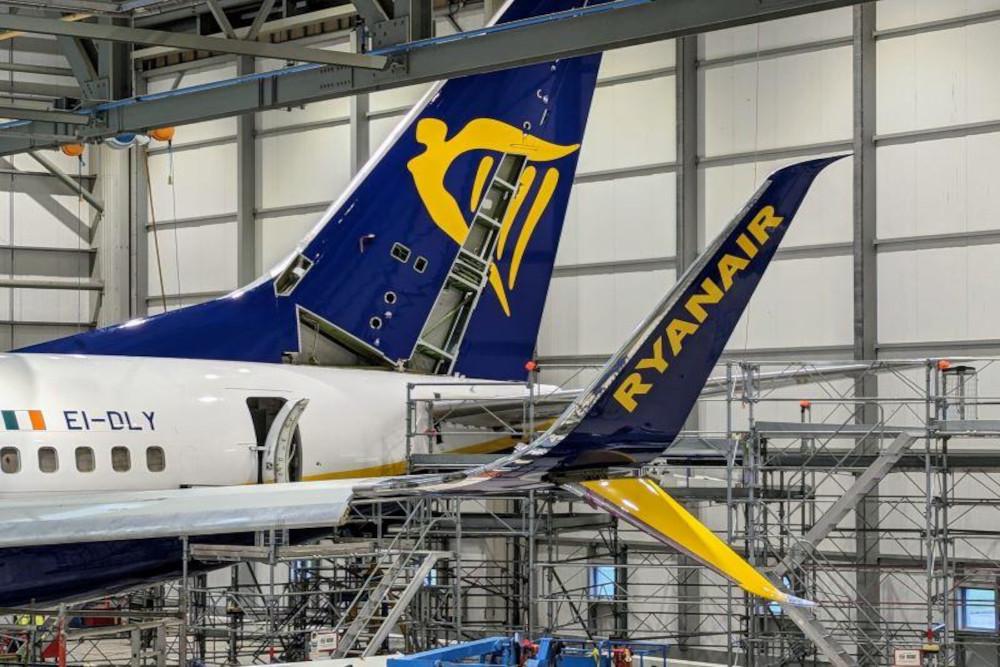
Construction of the new facility will commence in the final quarter of 2023.
Most low-cost carriers prefer to focus on their core flying operations and outsource activities such as maintenance, but in-sourcing can also make sense once carriers attain sufficient scale.
Therefore, it was not surprising to see Ryanair this week announce plans to build a new four-bay hangar at Dublin Airport as part of a €40 million ($44.1 million) investment it will make in the facility there.
“This facility will be state of the art and one of the most environmentally friendly hangars in Europe and will facilitate the maintenance of our growing fleet,” stated Eddie Wilson, CEO of Ryanair.
The airline plans to grow to 600 aircraft by 2026, a huge fleet that continues to require it to use a mixture of in- and outsourced maintenance provision. Ryanair has other MRO facilities in Kaunas, Lithuania; Wroclaw, Poland; Seville, Spain and Glasgow, Scotland, but it also uses external providers such as Joramco in Jordan.
Last year the low-cost carrier group announced a five-year contract with the Amman-based provider, under which Ryanair aircraft will occupy up to six heavy maintenance bay slots at Joramco’s facility during the subsequent five winter seasons.
The deal is built on a 2019 agreement between the parties, under which the Dublin-based low-cost carrier booked two lines at Joramco’s facility for heavy checks of its Boeing 737NG aircraft.
Yet the carrier has also moved to be more self-reliant. In late 2020, during the pandemic, it said it had agreed to “better terms” with its maintenance providers and reduced costs further by insourcing more work.
Its new 120,000 sq.ft2 hangar in Dublin will facilitate the heavy and line maintenance of Ryanair’s fleet at Dublin Airport as the airline grows its fleet, with the delivery of 737-800 aircraft from Boeing.
Construction of the new facility will commence in the final quarter of 2023, with aircraft maintenance operations planned to start in Q2 2025.





